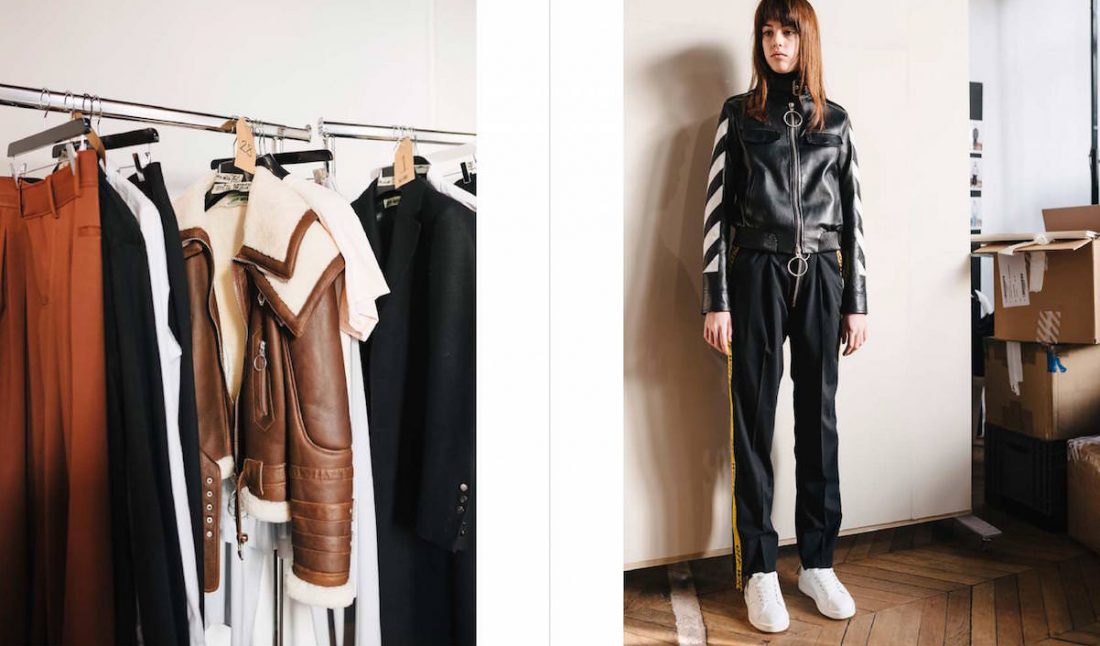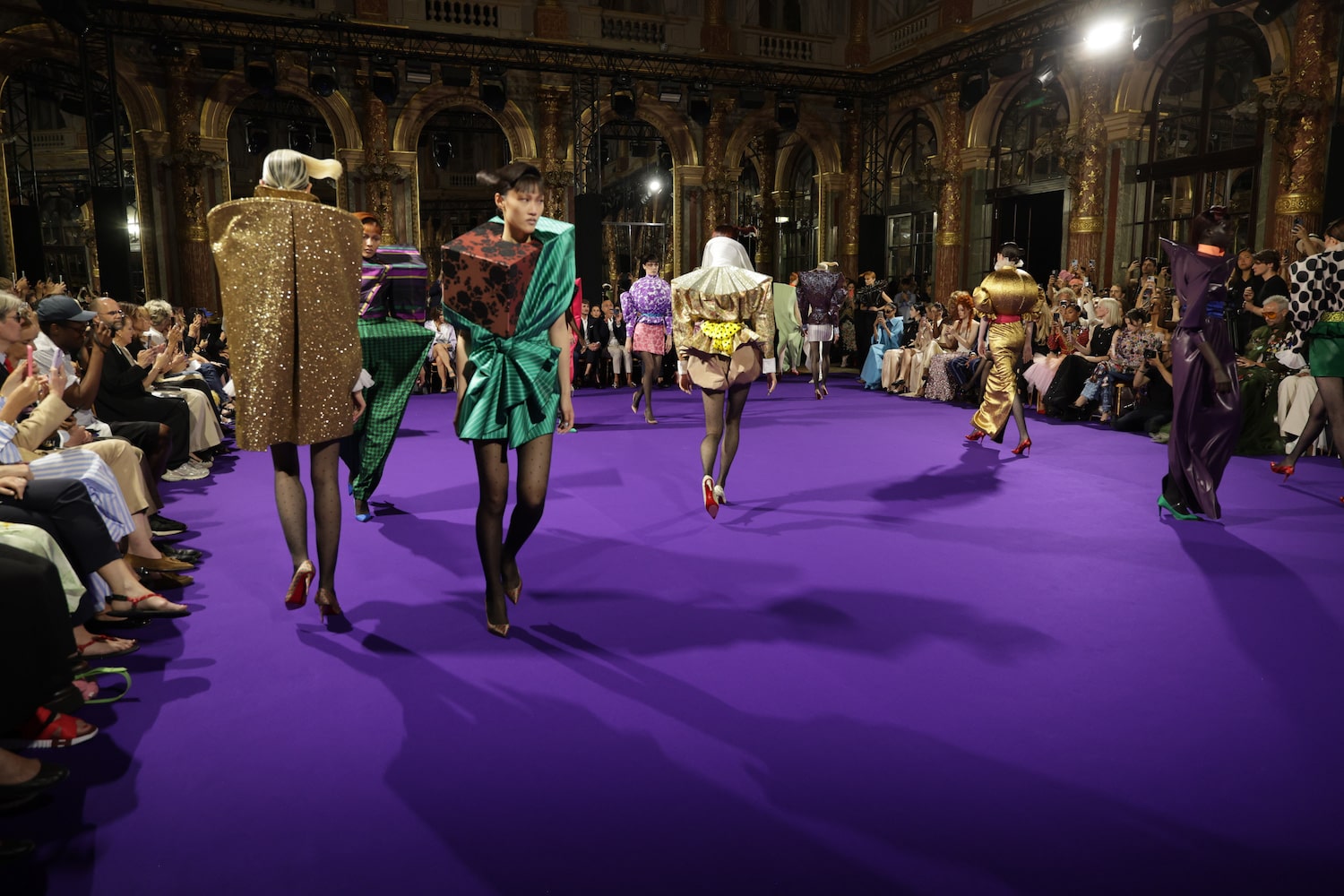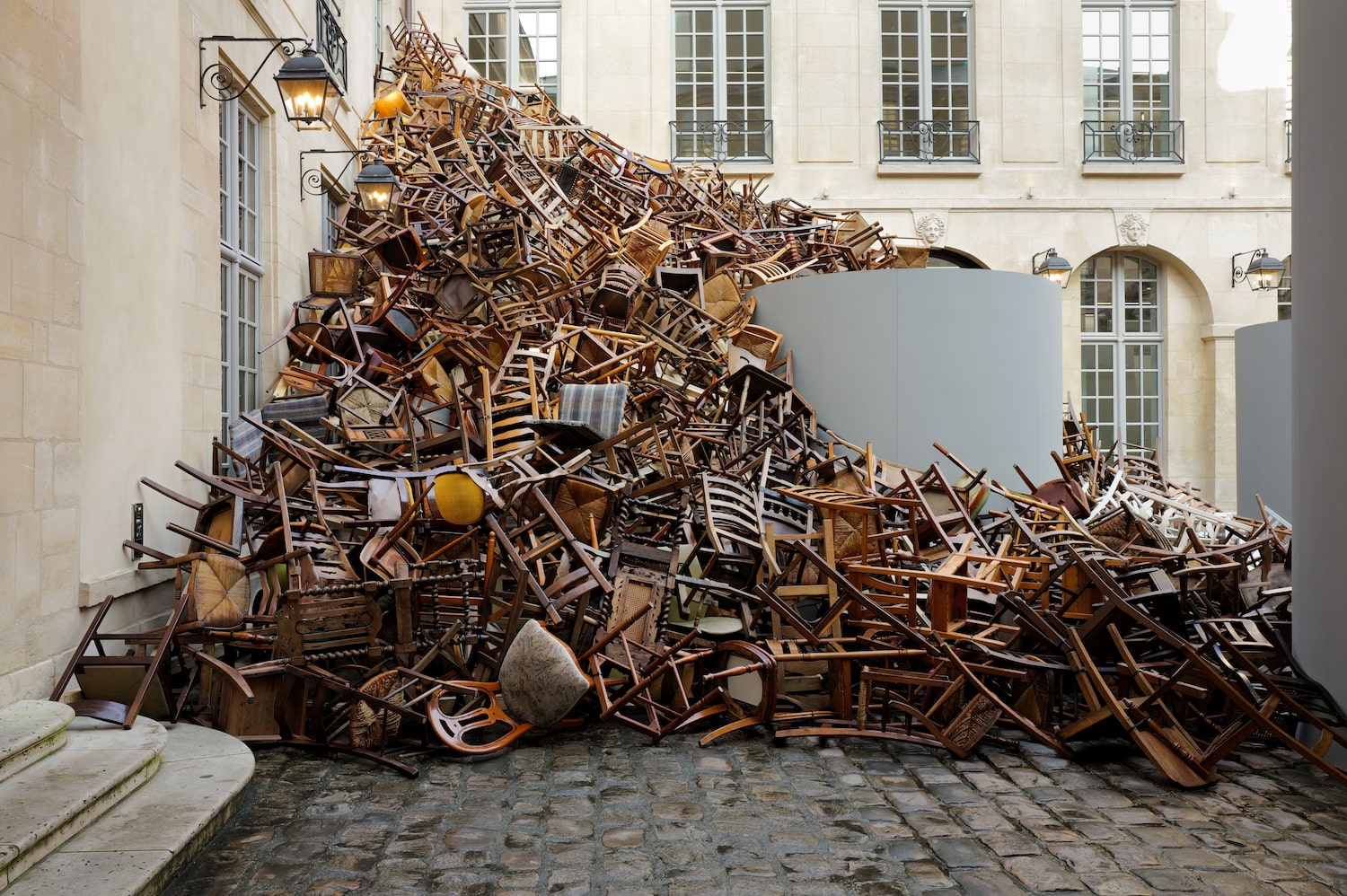Virgil Abloh is a creative director. He likes that title. It acts as an umbrella over the different modes and genres in which he works—music, fashion, design. He sees it all as interconnected, inside a gray area in between, from which the name of his fashion label Off-White is derived. The label launched in 2013 with women’s and men’s collections, and has seen marked success and praise for special projects with Sky Ferreira, Dover Street Market, Colette, and more. The brand has launched pop-ups and stores in London, Beijing, Hong Kong, Shanghai, Seoul, and Tokyo. At the moment for Abloh, fashion is the best vehicle through which to express his vision, but that could change, and probably will.
Whitewall caught up with Abloh at Soho House in Chicago, just a few days after his men’s show premiered in Paris over the summer. One underlying theme of the menswear Spring/Summer 2017 collection was the scorpion, representing potential death. Abloh confessed that he is propelled by a feeling that if he didn’t do all this work, he would die. Which sounded grim, he admitted, but he didn’t see it that way.
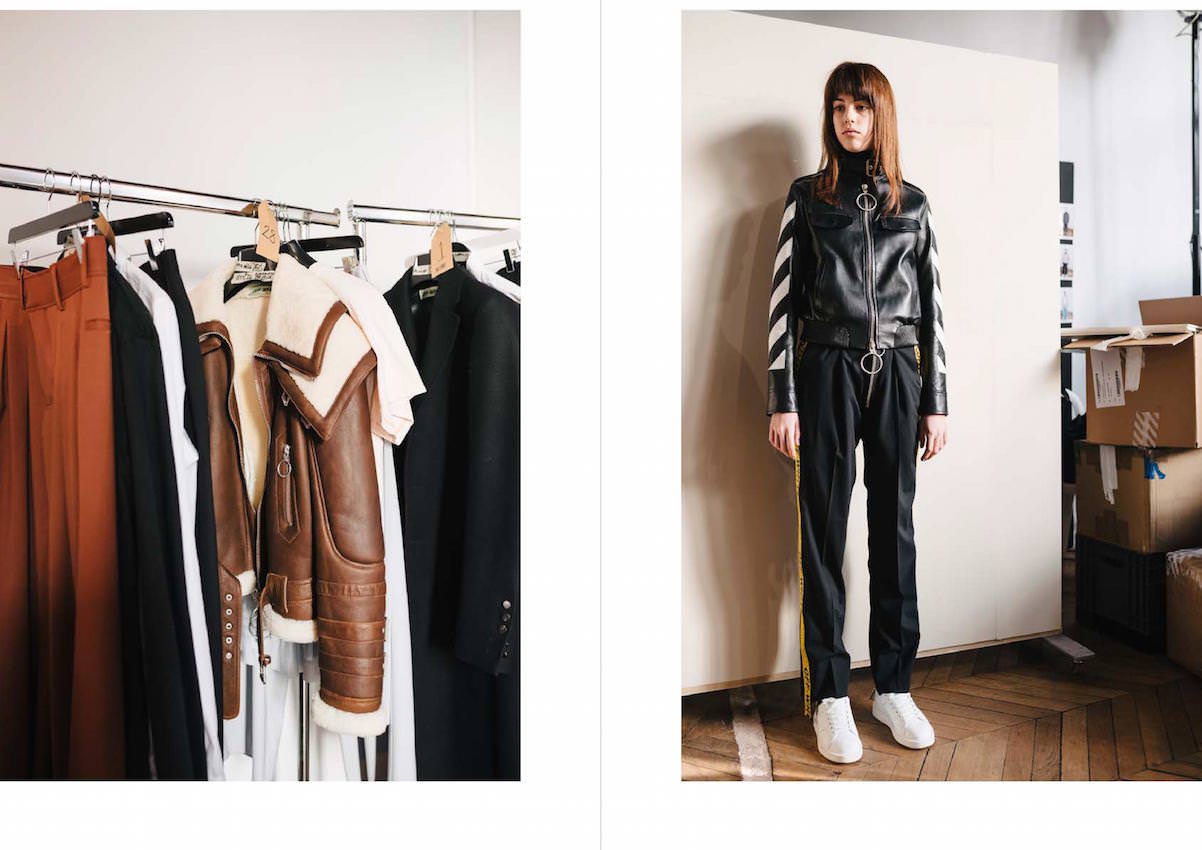 Courtesy of Off-White
Courtesy of Off-White
WHITEWALL: You’re just back from showing your men’s Spring/Summer 2017 collection in Paris. We saw that you collaborated with the artist Brendan Fowler for it. How do you feel it went?
VIRGIL ABLOH: Off-White is sort of a halo or a communicating device for me. It’s like a diary, and, in hindsight, a clothing brand in a modern context is like a perfect way to do a multidisciplinary journal entry. I make up themes of this collection based on the current times. Each season is unto its own; it’s always a response to something. There’s that element of storytelling.
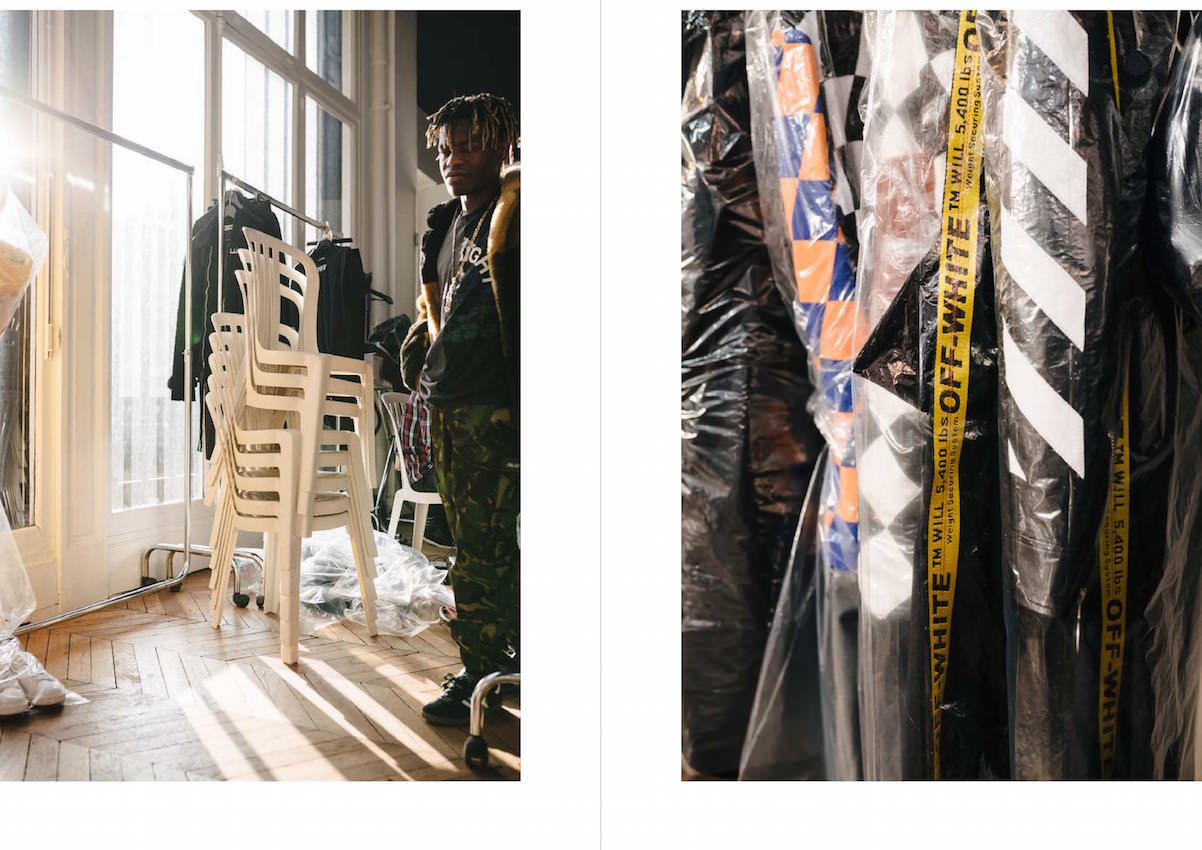 Courtesy of Off-White
Courtesy of Off-White
So the main theme of this collection was showcasing what’s behind the hood, or behind the facade. It’s a “mirror on the wall who’s the fairest of them all;” a blanket statement about all brands. But then I wanted to use the show to showcase underlying themes, one of which was the scorpion motif, which to me represents a potential death. It sounds more grim, but it’s my motivation to do it, to do it all at one time. It takes a lot of work, but I don’t consider it work. I’m sort of triggered by this feeling that if I don’t do it, I would die.
WW: Do you also worry about having done enough before you die? Are you ever concerned about your legacy?
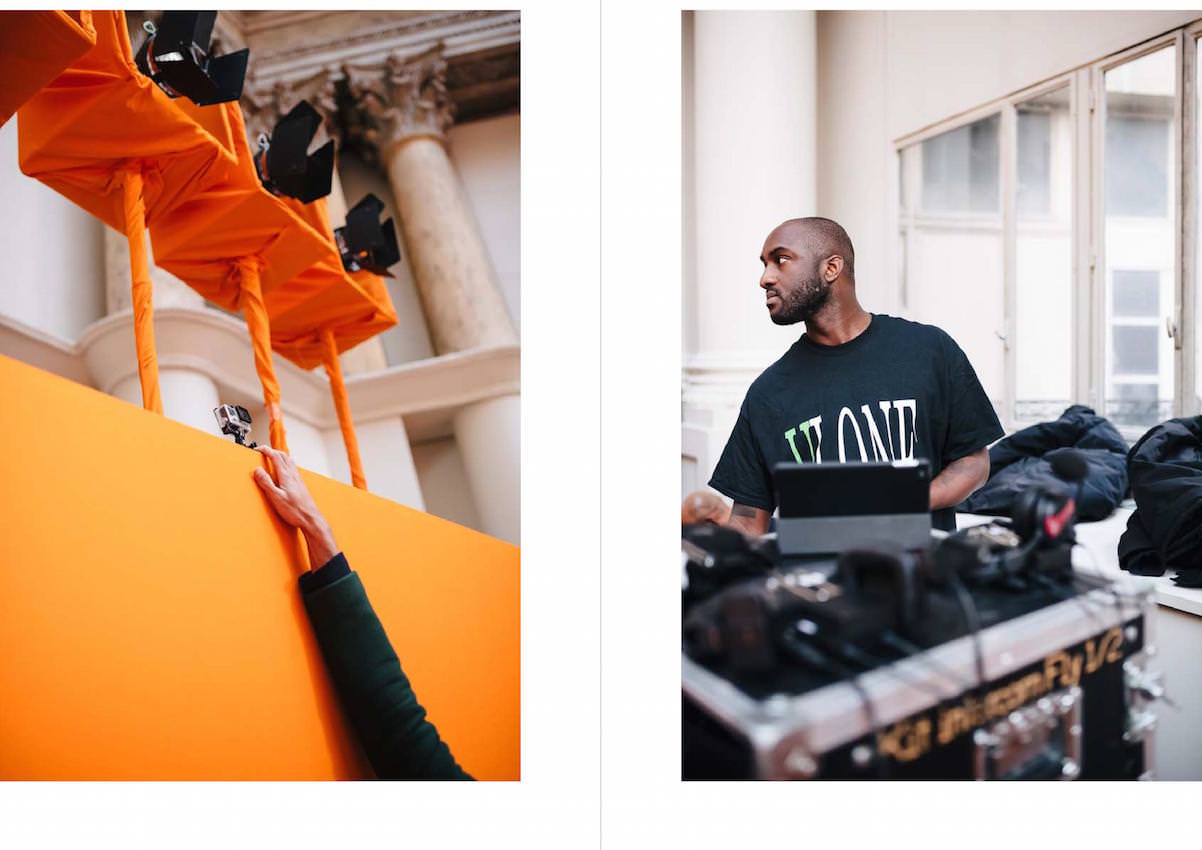 Courtesy of Off-White
Courtesy of Off-White
VA: Yeah, there’s the want to create something that lives longer than you. All those things are, I think, often what distinguishes what artists make from things that are just made. They’re spirited things; they come from someone that feels like they have to get this. I have a philosophy that Off-White isn’t necessarily clothing. My circle of network isn’t about people wearing clothing. I guess that’s what the point of difference is. There could be a modern context of a brand like clothes that people wear and you’re a follower of that brand or that tribe or whatever. But my tribe is actually not wearing the clothes. It was more like a handshake on a thought process. It’s like, we think, we move, we think about fashion as an art form; we don’t think about it as an identity, in a way. I wear things that I make, but I also don’t wear a lot of things that I make.
WW: So Off-White is more than fashion?
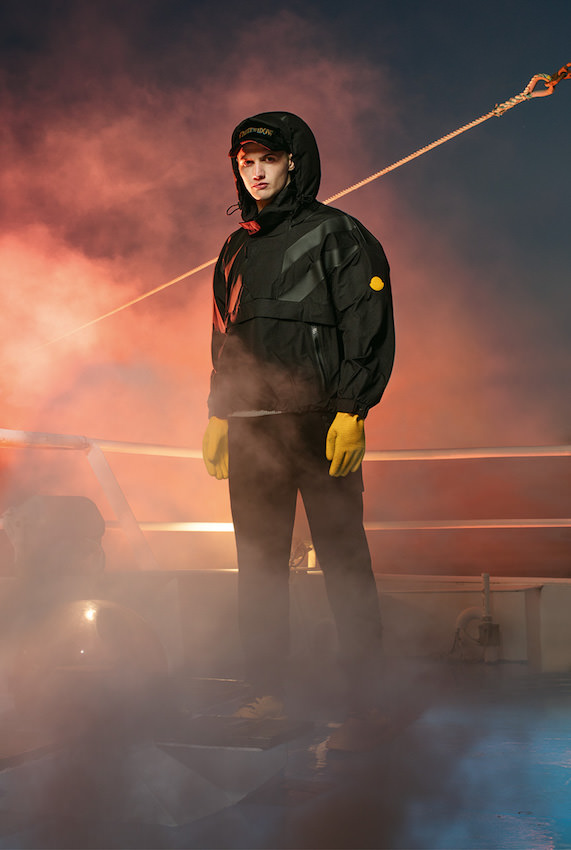 Courtesy of Off-White
Courtesy of Off-White
VA: That’s what the facade is. It’s the groups of people; it’s an interconnectedness internationally around a particular train of thought. I think that in a way it’s by my design; it’s a premise that clothing in a modern context has gotten to the point where people perceive things by what you’re wearing. And a lot of the Off-White mentality is that clothes don’t really matter. There are things to style yourself and there’s certain motifs and everything, but the DNA in the brand is the interconnectedness of my friends and this thought process. It’s like unofficial official. Varying groups form the wide range of tastes and the wide range of personality, so that the brand isn’t really narrow. It’s not one thing; it’s not one aesthetic. The name itself implies that it’s in between two different things, no matter what. If its men’s or women’s, gray or blue, or black or white, I’m attempting to define a different definition of a clothing line. I’m using it as a premise to define a modern way of thinking.
WW: So what was the starting point for this modern way of thinking for you?
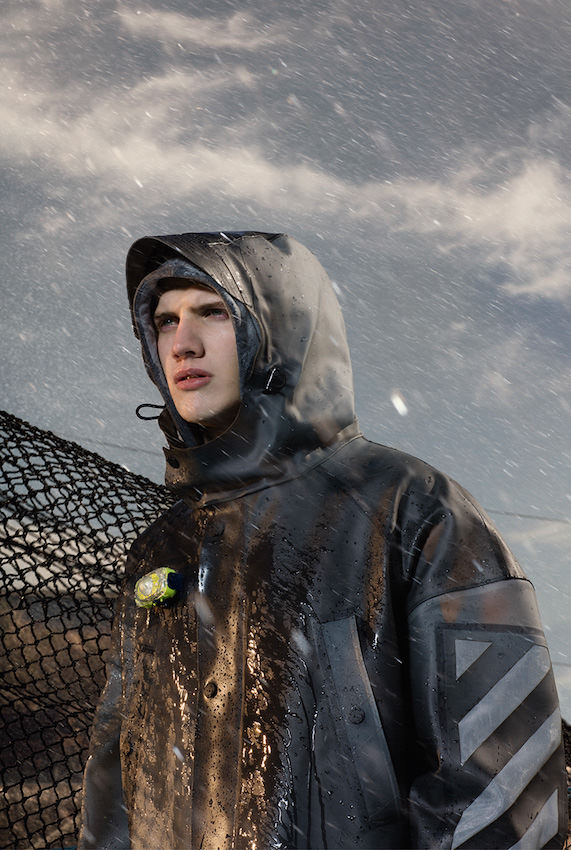 Courtesy of Off-White
Courtesy of Off-White
VA: I worked in architecture before this. And I’m equally into designing furniture as I am into clothing. And music is, I feel, a huge component of culture. So it’s all that, but then the question of what’s the best device to communicate to people.
There’s music, shows, stores, opportunities to do launches of other creative projects. The clothing line is a perfect vehicle to have an ongoing dialogue and documentation of the thought process. This is one idea that started in one place and, season by season, with the times, it’s evolving into something else. There are new epiphanies.
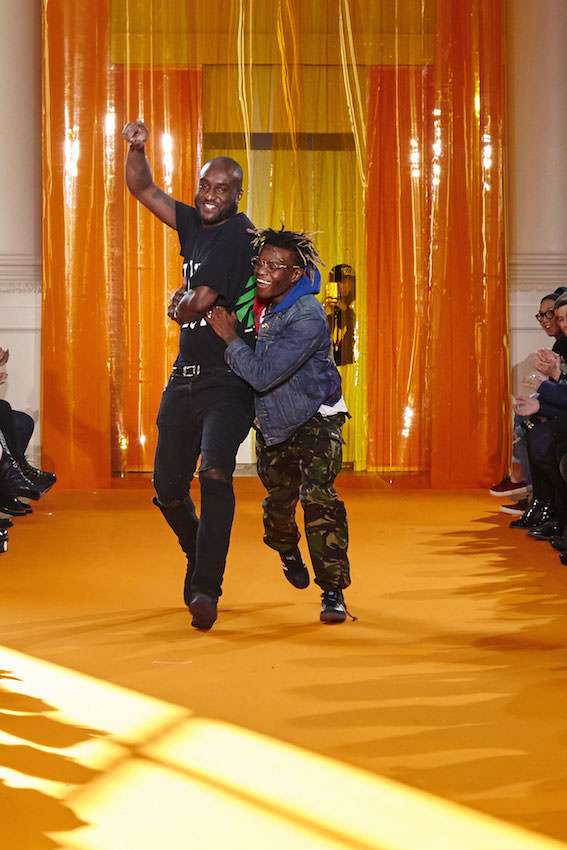 Courtesy of Off-White
Courtesy of Off-White
WW: So fashion at the moment is the best vehicle for you to communicate those new epiphanies.
VA: Like, I’m opening a store in Japan in three days that isn’t a store. It’s an office. I learned these principles from Rem Koolhaas and what he and Michael Rock were doing with 2×4 and thinking of Prada stores not as a flagships, but as epicenters. It kind of sounds facetious to say, “Oh, it’s not about selling clothes, its not about the commodity,” which it obviously is, it’s underlined. But if you get beat into just focusing on [commodity] you’re missing a huge opportunity. What Off-White is trying to stand for is thinking about, “What are the takeaways that you get from a product or a brand without which having to consume it?” There’s much more of an eye-opening, and it’s way more of an art premise than a commerce premise.
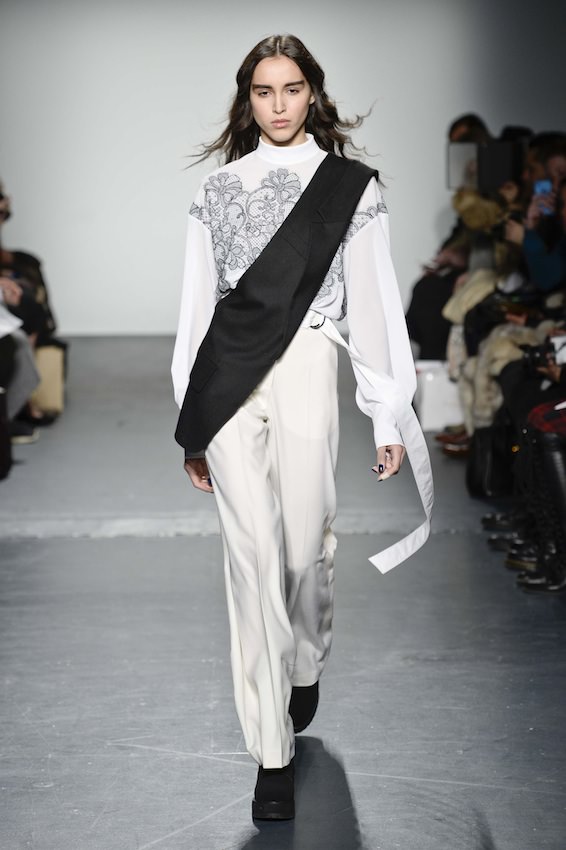 Courtesy of Off-White
Courtesy of Off-White
WW: So how did you come to work with Brendan Fowler on the recent collection?
VA: Brendan’s work, his “crash pieces,” are something that I believe that any fashion designer or designer in general would love, because it’s such a simple idea, super well executed and the pieces speak for themselves. To me, they are some of the greatest artworks of the generation of current artists.
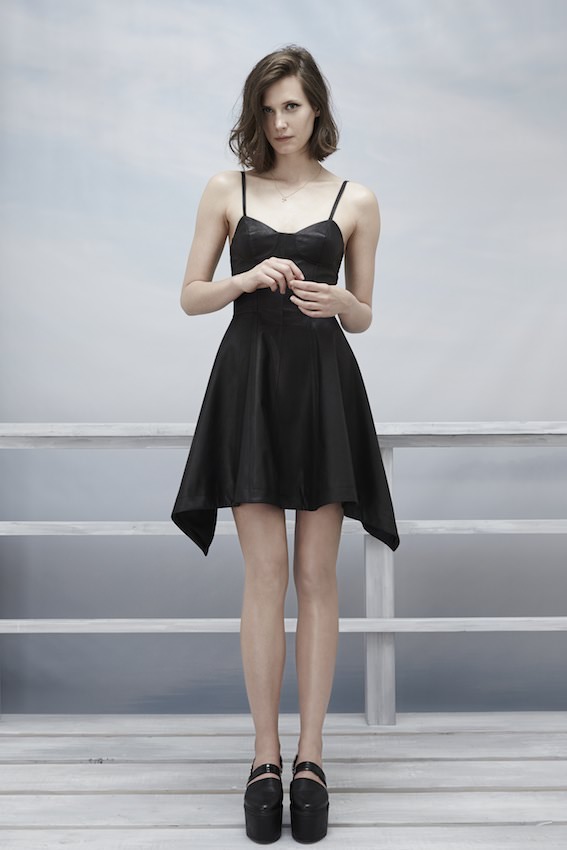 Courtesy of Off-White
Courtesy of Off-White
I met him through a friend, and it was just like friends of friends hanging out, forming a relationship and being into music and all these other things and hanging out. And then it was like, “Hey, let’s do something,” and not in a way where it uses the art as an embellishment. It’s a real connection. He hasn’t revisited the original “crash pieces” since he made them. For me, it was like, “Let’s go to Milan, let’s create them together, let’s think about what a context in clothing looks like, in the same spirit of the theory not the aesthetic.”
Off-White is generally based on everything from Duchamp to modern architecture to Bauhaus International Style. Like one style of clothing or one style of building that is so resolved that it can exist all over the world—Germany, Tokyo, Africa. Social media made everything one. I see a kid in Japan who wants to look like friends of mine in New York. So that is the petri dish that I’m making in.
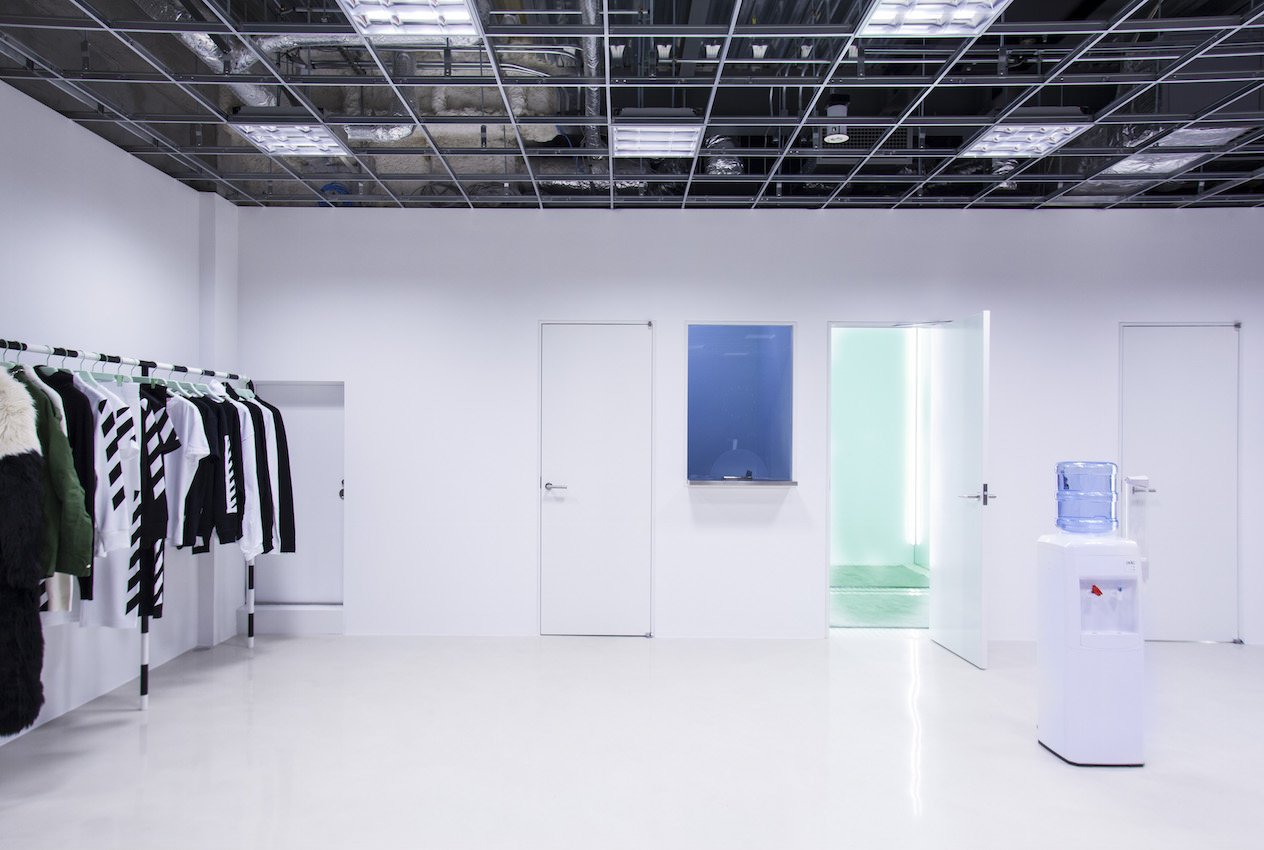
WW: What did you and Brendan come up with in Milan then?
VA: They are paintings in a frame that are crashed together. They look like they’re thrown together, but they’re meticulously cut and placed and very well thought out and orientated. They sit up off the walls like a sculpture, not a 2D thing. So our idea was to consider those as finished pieces, [we had them printed on fabric] so they’re all resolved. And then crashing them with the garment. So what happens is when you crash those two things together, it affects the shape of the garment. So everywhere they’re placed, it either creates a new hemline or removes a whole panel outside. It’s a lot of theory and a lot of thought poured into a seemingly simple thing.
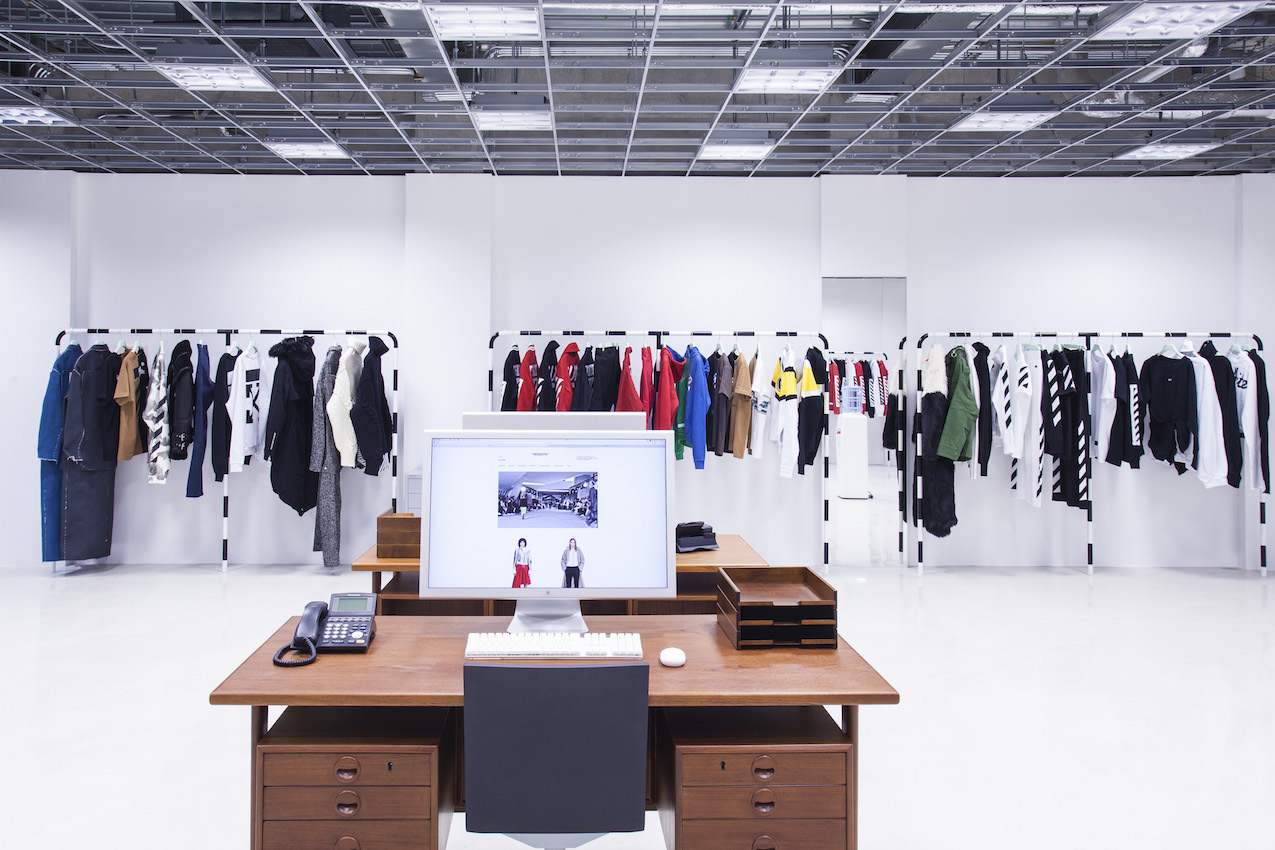 Courtesy of Off-White
Courtesy of Off-White
WW: That is wearable.
VA: Yeah, considering that they’re art pieces. I buy clothing as art. Like a Raf Simons piece, to me it’s the same, it’s art. Obviously, [Brendan’s] paintings are insanely expensive and you can’t buy them. But what opportunity can you ever have to own a piece of clothing that’s made by the artist and a designer? We come together and we make these things. And they’re in a whole collection, in a whole different context.
WW: The women’s Fall/Winter 2016 collection had a few looks that looked like they were made out of a painting canvas.
VA: Yeah, those were my favorite pieces that I’ve ever made. The Giorgio de Chirico paintings that I found/stole from a fabric store in Paris days before the show. So just in the same way that a couture person thinks about making couture clothes, I think about things from a ready-made or more graffiti perspective. One of my favorite artist friends in my circle of artists is named Jim Joe from New York. He, to me, transcends the art form of public art or graffiti or whatever. To me, he’s like Warhol of our time. Last year he was working on some de Chirico pieces, that’s how I learned about de Chirico. And when I was shopping [in Paris], I walked in and saw these two de Chiricos on a wall, and I was like, “I’m going to buy those and make dresses out of those as if they were expensive lace fabric.”
WW: You also recently launched a printed publication at Colette in Paris. We read that you wanted to create something more affordable for Off-White, since not everyone can afford the clothes.
VA: The thoughts are less expensive. The clothes are more expensive to make. The brand is now three years old and I’m able to unroll the original ideas I had. Off-White is not about the clothes. In the same way it’s all about the thoughts and allowing entry points into the thought process. The books, the published things, the words, these interviews are more to the point of what I want people to receive than just the aesthetic of the clothing. Than, “Hey, do you need another jacket? Do you need another printed T-shirt?”
It’s a vocabulary. The point is the books, it’s the publishing, it’s the Instagram, it’s the website, the first advertising campaign for Off-White.
WW: Was there a point at which you felt that idea for Off-White crystalized?
VA: No, what I’ve learned is that you try to hit a home run with every statement. That’s why I’m glad I started this process. And something that I’ve learned with artists is that it takes a lot of hindsight to make something that’s seemingly crystalized. That’s what the world is, that’s what life is.
I started Off-White as just a gut feeling to legitimize the style of clothing that my friends and I were making. I’m a student of design, self-taught. I’m a student of Raf Simons, of Ralph Lauren, of Kanye West, the same as everyone who grew up watching the “Second Hand Smoke” influential skateboard video or watching Michael Jordan. You mix these things. I’ve learned that once you start going back in your own unique histories, then you can offer something that’s new. My background is architecture, so that’s what I was dialing into. My mom has been a tailor for like 50 years of her life. So I was seeing and growing up around clothing in a specific way.
Everything I’ve said up to now is a foundation of finding and gathering more pieces to prove my concept. And the concept is that fashion as we’ve previously known it, before three years ago, was still vague. But we’ve seen it almost fully transgress into something completely different. It is is not only shaking up High Street, Topshop, Zara, H&M, it’s also changing Balenciaga, Gucci, Brioni. It’s about that dialogue with incredible design and commercial design. But fashion is not some sort of rogue thing that’s trying to make an upheaval and make high fashion irrelevant. If anything, I’m trying to extend the life of high fashion as a relevancy toward the younger generation that don’t necessarily perceive luxury in the same way that my parents did. Inclusion is part of the new luxury.
WW: Do you think that’s why people have responded so well to Off-White in just three years?
VA: I have this weird chip in my brain where I don’t know what people are responding to. I get that [they are] but I don’t get any validity out of it. The same way I don’t read any articles after I do them because, could you imagine how crazy that would make you?
It’s hard for me to gauge because right now I’m doing what I’m doing if no one’s looking at it or if everyone is. It freaks me out that I’m doing well. Then there’s sort of this obligation to understand why it’s doing well. And then I taint how I think about things. So I guess what I’m doing is making a guess about what people are whispering about. It’s not always the positive, so that’s where the scorpion comes in. I’m constantly trying to throw off somebody that doesn’t believe in something that I just made up in my head.
This article is published in Whitewall‘s fall 2016 Fashion Issue.






